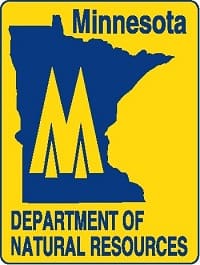Minnesota’s Newly Designed Ring-necked Pheasant Critical Habitat License Plate Available Today

Minnesota’s newest critical habitat license plate featuring a ring-necked pheasant in grassland, is available for purchase beginning Friday, Nov. 1, the Minnesota Department of Natural Resources (DNR) said.
The DNR chose the pheasant image from a previous pheasant-stamp winner submitted by Minnesota artist Joe Hautman who said he is honored to have the plate feature his artwork. The plate was graphically designed by DNR artist Collin Grant.
Other critical habitat license plate options are: a showy ladyslipper, a northern Minnesota fishing scene, a majestic white-tailed buck, a black-capped chickadee, and of course, Minnesota’s favorite, the loon.
“We are giving motorists more ways to show their conservation colors and individual identity,” said Tom Landwehr, DNR commissioner.
Minnesota motorists can purchase the new, autumn-colored plate at any licensed registrar
or department of motor vehicle office. It’s not necessary to wait until tabs are expired on the vehicle to purchase new plates and the tabs for the vehicle will expire at the same time.
The critical habitat license plate program was created in 1995 to provide additional opportunity for Minnesotans to contribute to conservation. Motorists who purchase a critical habitat plate make a minimum annual contribution of $30 to the Reinvest In Minnesota (RIM) Program. Every dollar generated through the sale of the license plate is matched with private donations of cash or land. The plates have generated more than $25 million toward the purchase of 7,700 acres of critical habitat and have helped fund nongame research and surveys, habitat enhancement and educational programs
The loon plate was released in 2002. The original deer plate was issued in 1996.
More than 100,000 motorists have habitat plates on their vehicles but plate sales have leveled off in recent years.
The critical habitat license plate program is cooperative effort of the DNR, the Department of Public Safety, which administers license plates sales, and the Department of Corrections, whose prison industry produces the plates at its Rush City facility.
For more on the how plate sales fund conservation efforts, go to www.dnr.state.mn.us/features/plates/index.html.

